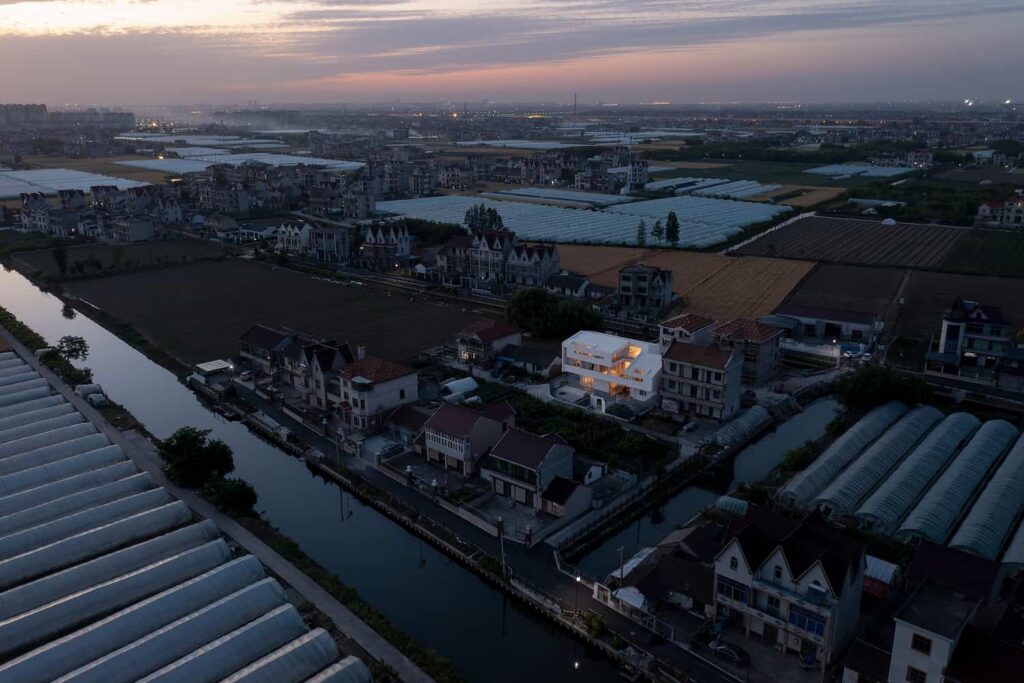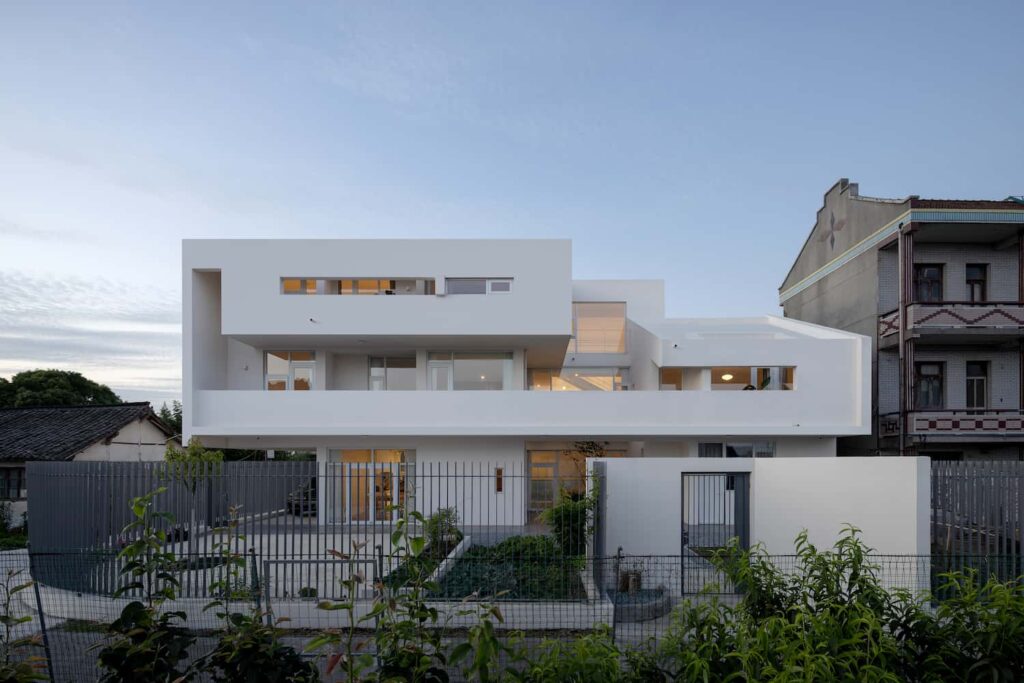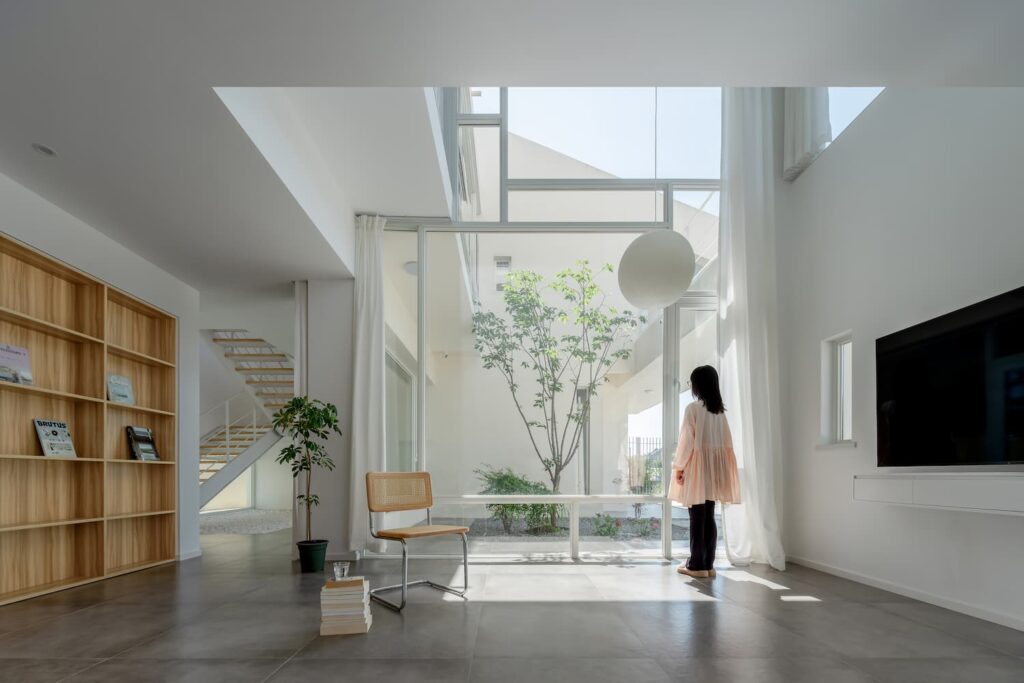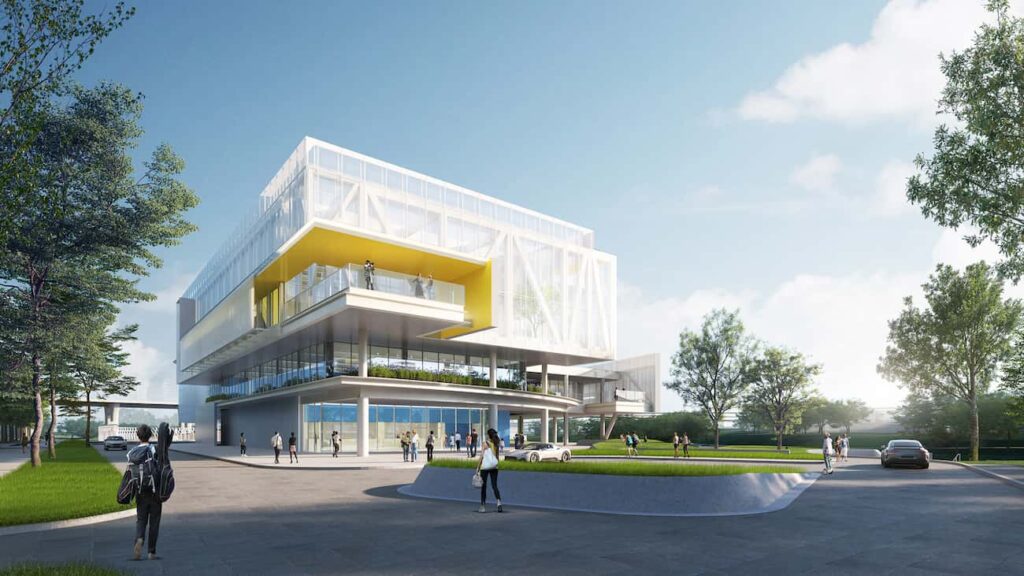
Over a decade ago, Bai LI and Xuan LI stood on the streets of Paris as young students, captivated not only by the city’s romanticism but by its carefully crafted public spaces. It wasn’t just the towering cathedrals or grand avenues that inspired them—it was the everyday places where life quietly unfolded: the calm of a public library, the fluidity of parks like Parc de la Villette, and the dynamism of cultural hubs such as the Centre Pompidou. Paris, with its seamless integration of culture, community, and design, did more than just shape their aesthetic taste—it lit a spark.
Bai LI and Xuan LI | Atelier LI
That spark would become a shared architectural journey grounded in empathy, observation, and subtle rebellion against the ordinary. At EliteX, we are proud to have Bai LI and Xuan LI as Cover Story of the edition: 05 Visionary Architects Reshaping the Future of Architecture in 2025.
After returning to Shanghai, they founded Atelier LI in 2018. The studio became their platform for translating these early influences into a design practice that merges natural aesthetics with contemporary living. Today, Bai and Xuan are known for their tranquilly radical architectural vision—an approach that places community and nature at its core while rejecting superficial trends. Their work draws inspiration from both global contexts and deeply personal experiences. But at its heart is a fundamental belief: architecture should improve lives, not just impress onlookers.
“Travel opens up the imagination in a way nothing else can. What you experience far surpasses what you possess.”
A pivotal moment in their early development came with their encounter with Le Corbusier’s Unité d’Habitation in Marseille. Built in the 1950s, the residential complex offered more than shelter—it proposed a new way of living. Each compact apartment functioned like a small house, but it was the shared amenities—rooftop gardens, mid-level cafes, and open-air parks—that struck a chord. Here was architecture that promoted community, that gave dignity to dense living, that suggested a better future. For Bai and Xuan, it was proof that design could foster human connection and elevate the mundane. “We may never build a utopia,” they admit, “but even starting small is worthwhile.”
Their design philosophy reflects this blend of idealism and grounded execution. It can be summed up in a single sentence: to merge modern lifestyles with natural oriental aesthetics and to create spaces that are comfortable, nature-inspired, and socially engaged. In their eyes, public spaces are not afterthoughts but essentials—an antidote to isolation and inequality in contemporary urban life. This belief shapes their vision for the future of architecture. As cities grow denser and social divides deepen, they argue that design must step in to soften the edges. Nature will become more important, not as ornamentation but as structure. Public spaces, too, must evolve—from occasional green pockets to continuous networks that connect buildings and communities alike. For Bai and Xuan, architecture is no longer about isolated statements. It’s about weaving shared spaces into the very fabric of cities.
The most recent built project of Atelier LI, Pudong Villa on the outskirts of Shanghai, offers a glimpse into this future. Situated in a rural area and bound by strict local regulations, the villa could have easily become a closed-off private retreat. Instead, Bai and Xuan saw constraints as an invitation to innovate. They dissolved boundaries between inside and outside through courtyards and vertical gardens that thread through the structure like veins of green. These elements not only enhance privacy but encourage interaction among the extended family that lives there. Expansive windows bring in natural light, casting dynamic shadows that shift with the day and season. The result is a home that breathes with its environment—serene, open, and deeply human.


Despite their modern aesthetic, Atelier LI maintains a strong connection to the tactile origins of architecture. Their time in Paris honed a sensitivity to materiality and craft, and their studio continues to prioritize handmade models and sketches. “We design like craftsmen,” they say. Even when they use software, the goal remains the same: to preserve the intuitive, human aspect of creation. In rural China, where modern construction resources may be limited, this mindset proves invaluable. They work closely with local builders, relying on simple methods—bricks, concrete, patience—to translate complex designs into reality. This low-tech, high-touch approach ensures that their buildings remain accessible and contextually rooted.
“Beauty distinguishes architecture from mere construction. It’s not luxury—it’s necessity.”
One of the most defining elements of their practice is their relationship with community. They operate within two circles—the professional architecture world and the non-professional public—and must constantly navigate the space in between. They understand that successful design depends on more than technical excellence; it requires buy-in from clients and communities. This is especially challenging in China, where architectural literacy varies greatly across generations and regions. “We often discuss with our clients: What makes a building good? What makes it beautiful?” they share. These are not rhetorical questions. They are starting points for deeper conversations about value, taste, and identity. While professional peers have recognized their work through publications and accolades, Bai and Xuan believe that real success lies in building shared understanding—an ongoing and sometimes uphill journey.
Their creativity is also fueled by a strong instinct for exploration. Over the years, they have travelled through Corsica, Thailand, and Vietnam—not as tourists, but as curious observers. These journeys, often minimalist and spontaneous, offer more than visual inspiration. They present alternative ways of living, thinking, and being. “Travel opens up the imagination in a way nothing else can,” they explain. While digital media offers a window to the world, it cannot replace the sensory depth of standing in an exotic landscape or encountering with strangers in a village by the sea. These experiences seep into their work, expanding its emotional and cultural range.
Looking ahead, Atelier LI is realistic about the challenges facing their profession. Even in developing China, the age of large-scale construction may be waning. But they don’t see this as a loss. Rather, it’s a moment to refocus on quality. “We’re not interested in quantity,” they say. “Our goal is to realize meaningful designs that reflect care and vision.” In an industry often driven by speed and spectacle, this emphasis on depth feels refreshingly defiant.
Their interest in oriental aesthetics is another thread that runs through their work, though they approach it with restraint and thoughtfulness. Rather than replicating traditional motifs or using obvious materials, they aim to express eastern sensibilities through universal forms. Subtlety, abstraction, and spatial rhythm take precedence over decoration. It’s about evoking a feeling—a sense of calm, continuity, and quiet elegance—without resorting to clichés.


Balancing function, beauty, and innovation is at the core of everything they do. For them, functionality must follow concept, and beauty is what elevates the ordinary to the extraordinary. In many modern cities, especially in China, buildings are often driven by utility alone. Bai and Xuan challenge this norm by insisting on beauty—not as luxury, but as necessity. “Beauty distinguishes architecture from mere construction,” they note. When function and concept are in harmony, beauty becomes inevitable. And when that beauty serves a greater social or emotional need, innovation naturally follows.
“We may never build a utopia, but even starting small is worthwhile.”
If given the chance to create their dream project, Bai and Xuan would design a simple, elegant space in a peaceful coastal city. A place where indoor and outdoor environments blur together, where greenery winds gently through the architecture, and where natural light and breezes shape the atmosphere. It would be a space for people to wander, to connect, to loosen up. “It’s not just about the building,” they emphasize. “It’s about the life it holds.”
In many ways, their dream already echoes through their existing work. Every project is a step toward that ideal—a measured, mindful response to the world’s growing noise. Through subtle interventions, patient dialogue, and a refusal to compromise on quality, Bai LI and Xuan LI are shaping a new kind of architecture: one that is generous, intelligent, and rooted in the belief that good design begins with good intentions.